- Home
- Jhumpa Lahiri
The Penguin Book of Italian Short Stories
The Penguin Book of Italian Short Stories Read online
Introduced, edited and with selected translations by
Jhumpa Lahiri
* * *
The Penguin Book of Italian Short Stories
Contents
A Note on the Citation of Titles and Their Translations
Introduction by Jhumpa Lahiri
ELIO VITTORINI Name and Tears
GIOVANNI VERGA Picturesque Lives
GIUSEPPE TOMASI DI LAMPEDUSA The Siren
ANTONIO TABUCCHI Against Time
ITALO SVEVO Generous Wine
LEONARDO SCIASCIA The Long Voyage
ALBERTO SAVINIO Bago
UMBERTO SABA The Hen
LALLA ROMANO The Lady
FABRIZIA RAMONDINO The Tower
LUIGI PIRANDELLO The Trap
CESARE PAVESE Wedding Trip
GOFFREDO PARISE Melancholy
ALDO PALAZZESCHI Silence
ANNA MARIA ORTESE A Pair of Eyeglasses
ALBERTO MORAVIA The Other Side of the Moon
ELSA MORANTE The Ambitious Ones
GIORGIO MANGANELLI Sixteen, Twenty-one, Twenty-eight and Thirty-seven from
PRIMO LEVI Quaestio de Centauris
TOMMASO LANDOLFI Gogol’s Wife
NATALIA GINZBURG My Husband
CARLO EMILIO GADDA The Mother
ENNIO FLAIANO A Martian in Rome
BEPPE FENOGLIO The Smell of Death
LUCE D’ERAMO Life as a Couple
ANTONIO DELFINI The Milliner
GRAZIA DELEDDA The Hind
ALBA DE CÉSPEDES Invitation to Dinner
SILVIO D’ARZO Elegy for Signora Nodier
FAUSTA CIALENTE Malpasso
CARLO CASSOLA At the Station
CRISTINA CAMPO The Golden Nut
ITALO CALVINO Dialogue with a Tortoise
DINO BUZZATI And Yet They Are Knocking at Your Door
MASSIMO BONTEMPELLI The Miraculous Beach, or, Prize for Modesty
ROMANO BILENCHI A Geographical Error
LUCIANO BIANCIARDI The Streetwalker
ANNA BANTI Miss
GIOVANNI ARPINO The Baboon
CORRADO ALVARO Barefoot
Notes
Chronology
Further Reading
Acknowledgements
Copyright Information
About the Translators
About the Author
Jhumpa Lahiri is an award-winning author and translator. She received the Pulitzer Prize in 2000 for Interpreter of Maladies, her debut story collection, and was awarded a National Humanities Medal in 2015. Her other works of fiction in English include The Lowland, which was a finalist for the Man Booker prize.
Lahiri has written three books directly in Italian, including In altre parole (translated in English as In Other Words) and the novel Dove mi trovo. Her translation of Domenico Starnone’s Trick was a Finalist for the National Book Award. She divides her time between Rome and Princeton University, where she is a professor of Creative Writing and Literary Translation.
A Note on the Citation of Titles and Their Translations
Careful effort has been made to ascertain whether or not there are published English translations of Italian works included or cited in this volume.
When an Italian work has been published in English, its title appears in italics, as is common practice. When such a work has not been published in English, a literal translation of the title is given, and appears without italicization. When an Italian novel published in English has a very differently worded title to that of the original, a literal translation has also been provided. Titles of individual short stories are placed within quotation marks and unitalicized.
Introduction
Poiché dispongo di input ibridi, ho accettato volentieri e con curiosità la proposta di comporre anch’io un’ ‘antologia personale’, non nel senso borgesiano di auto-antologia, ma in quello di una raccolta, retrospettiva e in buona fede …
Always inclined to a hybrid input, I accepted willingly and with curiosity the proposal to compile a ‘personal anthology’, not in the Borgesian sense of an auto-anthology but in that of a harvesting, retrospectively and in good faith …
Primo Levi, La ricerca delle radici1
One evening in Rome, in the kitchen of the Italian writer Caterina Bonvicini, I expressed a desire to assemble a collection of Italian short stories translated into English. It was March of 2016, during a brief trip back to Italy. Six months before, my family and I had returned to the United States after living for three years in Rome.
My life as a reader had, by that time, taken an unexpected turn; since 2012, shortly before moving to Rome, I had chosen to read only Italian literature, mostly from the twentieth century, and to read those works exclusively in Italian, a language I had diligently studied for many years but had yet to master. I was forty-five years old, and I believed, even before this new phase began, that I was already fully formed as a reader and writer. And yet I surrendered to an inexplicable urge to distance myself, to immerse myself and to acquire a second literary formation.
It was one thing to read only Italian when living in Italy, where the winds were favourable, where my state of voluntary literary exile made sense. I read with an adolescent’s zeal, transported to another dimension, standing before a new group of gods. I had an Italian teacher who came to my home twice a week and, at the start, brought me chapters and excerpts equipped with footnotes for elementary readers. I befriended Italians who mentioned authors I had never heard of before. I began frequenting bookstores, especially those that sold secondhand volumes, combing the shelves for their works. I purchased them and read them, and copied down sentences by hand, taping them over my desk for inspiration. I realized that, for the first time in decades, I was reading to satisfy only myself. I was no longer influenced by the expectations and broader cultural consensus that dictate what one should be reading – such frames of references had fallen away. The more people remarked on my new inclination – But don’t you miss English? – the more I clung to my newfound freedom, not wanting it to end.
But it did end; while in Italy, I was offered a job at Princeton University to teach Creative Writing, and so my family and I returned to the United States. Crossing the Atlantic, I read Primo Levi’s Se questo è un uomo (If This Is a Man), a first book which recounts the eleven months that Levi, a young chemist from Turin who became one of the twentieth century’s greatest writers, spent imprisoned in a German concentration camp before it was liberated in 1945. It was my first time reading that work in Italian, and the pure truth and beauty of those pages that transform one man’s experience of hell into a masterpiece of literature transformed not only the hours on the plane but also me personally, instilling in me an abiding awe – there is no other word for it – that even today governs my own newfound liberty as both a reader and a writer.
Teaching at Princeton, I wanted to transmit this awe, to share my admiration for Levi and the other Italian authors who had spoken to me deeply, who had taught me so much and who were now a part of me. And given that my classes were held in English, the only way to do so was to teach them in translated form. And so I searched for English versions of the works I wanted to talk about. I was struck by how many translations were either out of print or outdated, difficult to track down, and I was even more struck by the many great Italian authors who had scarcely been translated at all.
After dinner that evening at Caterina’s, she and I wandered from the kitchen into her study and began pulling books off her shelves. I already had a dozen authors in mind, and Caterina suggested a dozen others. I took out my diary and wrote all the names down, twenty-four in total. Of that group, twenty-th
ree are represented in the current volume. The authors jotted down that evening comprised a wish list. Back in Princeton, I made do with photocopies of translations that I hoped my students would enjoy. Then, not long after my second semester had come to an end, Penguin Classics asked me to assemble this anthology.
I was impressed by the passion with which my Italian friends and acquaintances reacted to the project. This passion was by no means exclusive to writers. I was struck by the degree to which Italians from different walks of life knew and cared about specific short stories. People would email me the names of authors and titles of works they felt were worthy of anthologizing, or thrust books from their personal libraries into my hands. My list began to grow, as did my reading, and back in Princeton that fall, I had accumulated well over fifty names.
At a certain point, I realized I had to set down some basic parameters. The first was to eliminate all living authors from my list. The second was to arrive at a number. Fifty felt celebratory and auspicious, but I worried that it would amount to an unwieldy physical object, and so, with some anguish, I whittled the list down to the forty featured here. The fruit of my research was the discovery of a potent, robust tradition of the short form in Italy, a harvest far more vast and varied than I’d anticipated.
What were my criteria? To gather together as many of the authors who have inspired and nourished my love for Italian literature, and for the Italian short story in particular. I wanted a volume I and others would be excited to teach from, and that students, ideally, would be eager to read. I wanted to include a wealth of styles, and a range of voices. The resulting collection, by no means comprehensive, reflects my judgement and sensibility, and also encapsulates a specific moment of my reading trajectory. I cast a wide net and, as is inevitably the case, a somewhat arbitrary one. Some authors – including several particularly dear to me – were consciously excluded due to one rationale or the other; others simply escaped unseen.
Once the list was final, it struck me that these forty Italian authors would not necessarily be familiar to any one Italian reader. Many of them have fallen out of favour, or have been sporadically published, and are therefore hard to come across in Italian bookstores. Ironically, I could only get my hands on them thanks to Firestone Library in Princeton or, if I was lucky, at the Porta Portese flea market, which brings hundreds of secondhand books, every Sunday, to Rome. Even after I had made my choices, people kept mentioning other writers I ought to have included, and suggestions will surely only proliferate now that the book exists.
I have focused predominantly on the twentieth century, though a few of the authors were born and began writing in the nineteenth, and others remained active into the twenty-first. It was my priority to feature women authors, lesser-known and neglected authors, and authors who practised the short form with particular vehemence and virtuosity. My aim is to present a portrait of Italy that reflects its reality. I prefer to work against a reassuring but ridiculous perception encapsulated by an American who once said to me, ‘Nothing bad can possibly happen in Italy.’ Of course, it is one thing to experience Italy as a tourist, another thing to live there. Then again, one has only to read the literature of any given place to recognize that bad things happen to everyone, everywhere.
Several members of this group knew one another during their lifetimes. They sustained, influenced, promoted, edited, reviewed and were at odds with one another. They formed part of a community, a network, bound together by vital personal and professional friendships and, in one case, even by marriage. And as I stood back to absorb the details of their lives and the nature of their creativity, I realized that they were all, by and large, hybrid individuals, with multiple proclivities, identities, signatures and shadows. They were writers of fiction and at the same time they were almost always other things: poets, journalists, visual artists, musicians. Many had demanding editorial responsibilities, were critics, were school teachers. Some were professional scientists and politicians. They served in the military, held bureaucratic positions, had diplomatic careers. And the vast majority were translators, living, reading and writing astride two languages or more.
The act of translation, central to their artistic formation, was a linguistic representation of their innate hybridity. The majority of these writers shuttled between dialect and standard Italian; though they all wrote in Italian, it was not necessarily the language they grew up speaking, or the first they learned to read and write in or were originally published in. Four were born outside of present-day Italy, and most of them spent significant amounts of time either studying, travelling or residing abroad. A few turned to other languages, writing novels in French or Portuguese, experimenting with German and English, teaching themselves different dialects, complicating their texts and their identities further still. Whether linguistic or stylistic, their creative paths were marked by experimentation, by wilful mutation. They were artists who questioned and redefined themselves over time, some defiantly distancing themselves from earlier phases of their work.
A central underpinning of their hybridity is manifested in the striking number of invented or altered names. Elena Ferrante is a pseudonym that has taken the literary world by storm, but long before her, Italian writers created alter-egos for political or personal reasons, either to protect themselves from the law or to disassociate themselves from their origins. Eight of the authors on this list were born with different names, and others published specific works under pseudonyms. To rename oneself is to edit one’s destiny, to insist upon an autonomous identity, and for a writer it is a means, quite literally, of rewriting the self. Not surprisingly, many of these stories address the theme of identity, of fluctuating selfhood, and accentuate the issue of naming in particular. Characters have complicated relationships to their names, and a few lack names altogether – perhaps a nod to one of the most intriguing characters in Alessandro Manzoni’s novel The Betrothed (I promessi sposi), who is called is ‘l’innominato’, literally, ‘the unnamed’.
Always pertinent to the discussion of identity is the question of women in Italy: how they were defined, how they were seen. Many of these stories are portraits of women, some confronting and challenging patriarchal ideology, others revealing attitudes in which women are objectified, belittled, maligned. One option, on my part, would have been to exclude such stories in order to protest against these objectionable depictions. But this would misrepresent a society and its history as reflected in its literature. As a woman, and a woman writer, these stories help me to better understand the cultural context of Italian feminism, and to admire the great strides that Italian women have made. The fact of the matter is that many of the most moving depictions of women in this collection were written by men. Marriage is a recurrent theme – to be precise, how a woman’s identity can be altered, compromised and negated by a man, and also by maternity. But the whole of the twentieth century, which witnessed the collapse of a series of powerful social institutions, including marriage, was a laboratory in which individual identities were being lost and found, regained and shed.
Hybridity is also manifested in the number of animal characters that abound in these pages, a recurrent metaphor that calls into question the porous barrier between the animal and human worlds. In this sense, some of these works can trace their lineage to the fables of Aesop, to the Metamorphoses of Ovid and to folkloric tradition, in which the animal kingdom has always played a delightful and prominent role. The significance of animals in literary satire was appreciated by the poet Giacomo Leopardi (1798–1837), whose Paralipomeni della Batracomiomachia (translated into English as The War of the Mice and the Crabs) is a mock epic, inspired by an ancient Greek poem, adapted by Leopardi to criticize imperial politics and false patriotism in Italy.2 A great number of these stories feature animals that talk, behave, think and feel just as people do. They substitute as friends, lovers, philosophical interlocutors, a spouse. They serve as mirrors and filters that reflect and reveal myriad emotional and psychological states. The
reader will note various characters who feel more animal than human, or are themselves both animal and human. The paradoxical valence of animals merits close attention in that they represent both a state of freedom as well as subservience, both innocence and savagery. As these stories make clear, they are creatures both cherished and consumed, both worshipped and sacrificed, beings that both define and question what ‘human’ even means.
In the course of pondering the diverse and intriguing encounters between man and beast in this anthology, I was struck by the following words by Benito Mussolini: ‘Fascism denies the validity of the equation, well-being-happiness, which would reduce men to the level of animals, caring for one thing only – to be fat and well-fed – and would thus degrade humanity to a purely physical existence’.3 This observation, antithetical to the in-between, transversal, protean essence of so many of these writers and their work, also allows us to make room for another, more troubling organizing principle: the reality of Fascism. Giovanni Verga was the first of the authors gathered in these pages to die, in 1922, the year Mussolini marched to power in Rome. All the rest lived under Fascism at some point or another, and were affected directly by its legacy. The ugliest manifestation of Fascism was to dehumanize, to treat people as animals, or worse. The irony of course was that in order to achieve their aims, it was those in power who behaved like beasts.

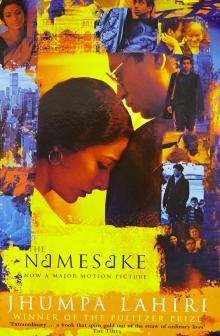 The Namesake
The Namesake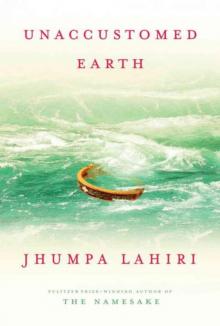 Nobody's Business
Nobody's Business Interpreter of Maladies
Interpreter of Maladies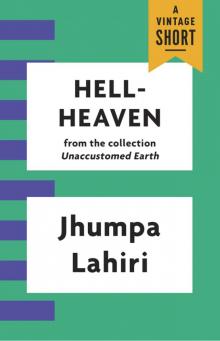 Hell-Heaven
Hell-Heaven The Lowland
The Lowland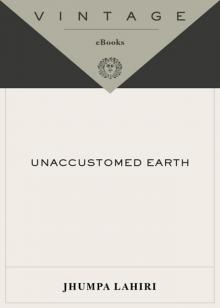 Unaccustomed Earth
Unaccustomed Earth The Clothing of Books
The Clothing of Books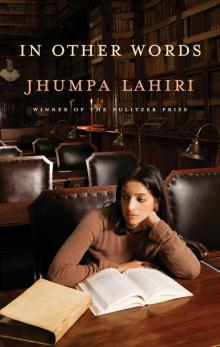 In Other Words
In Other Words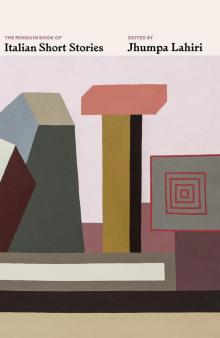 The Penguin Book of Italian Short Stories
The Penguin Book of Italian Short Stories